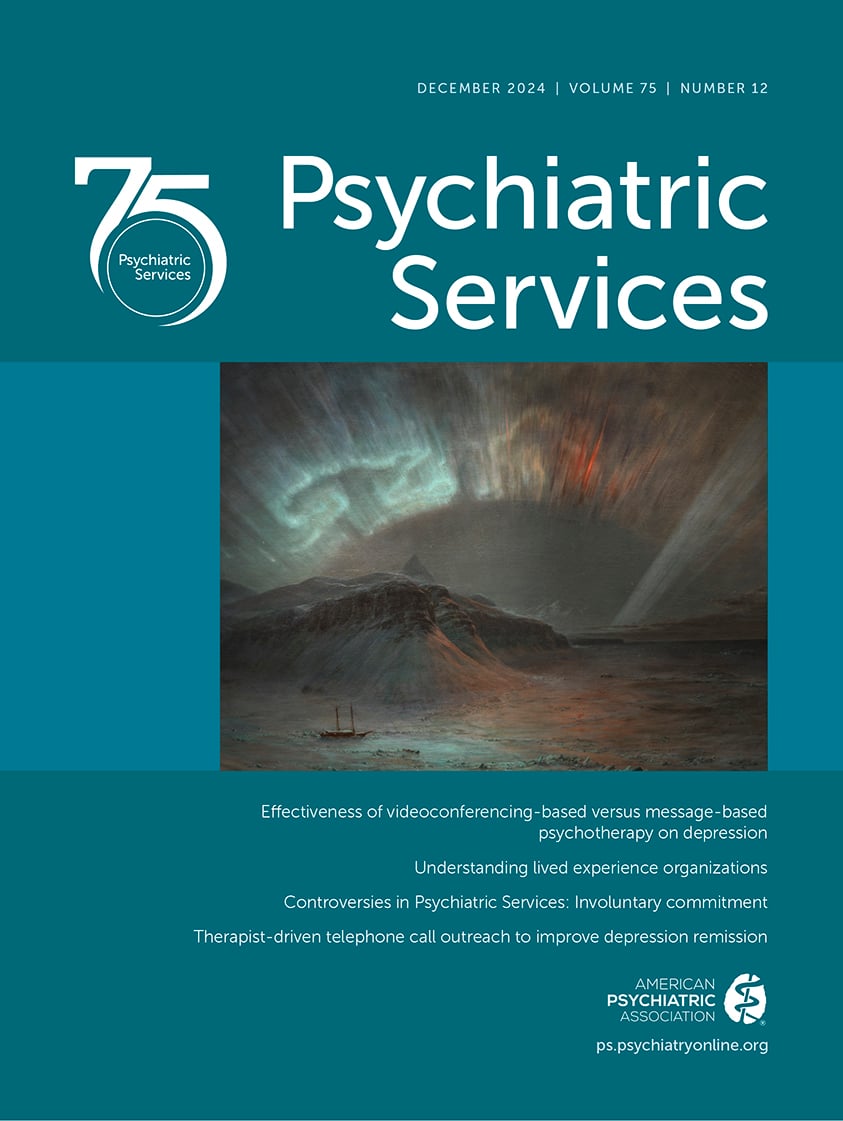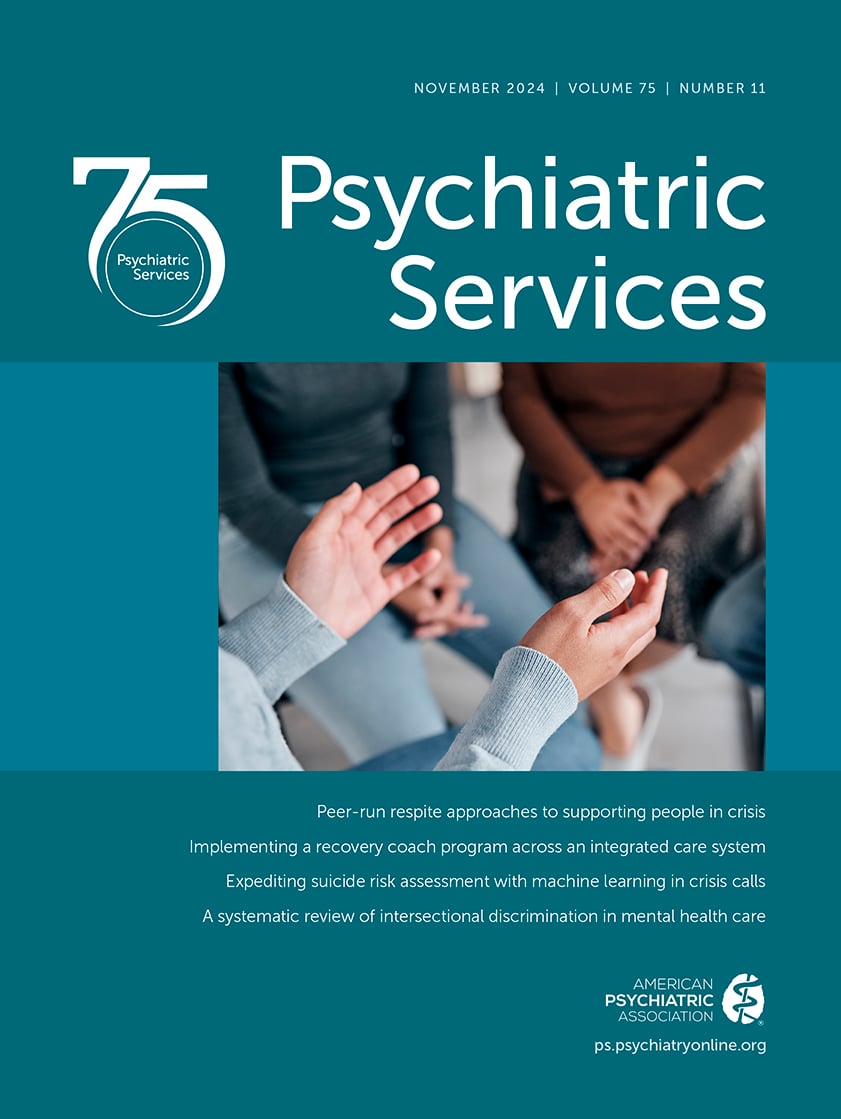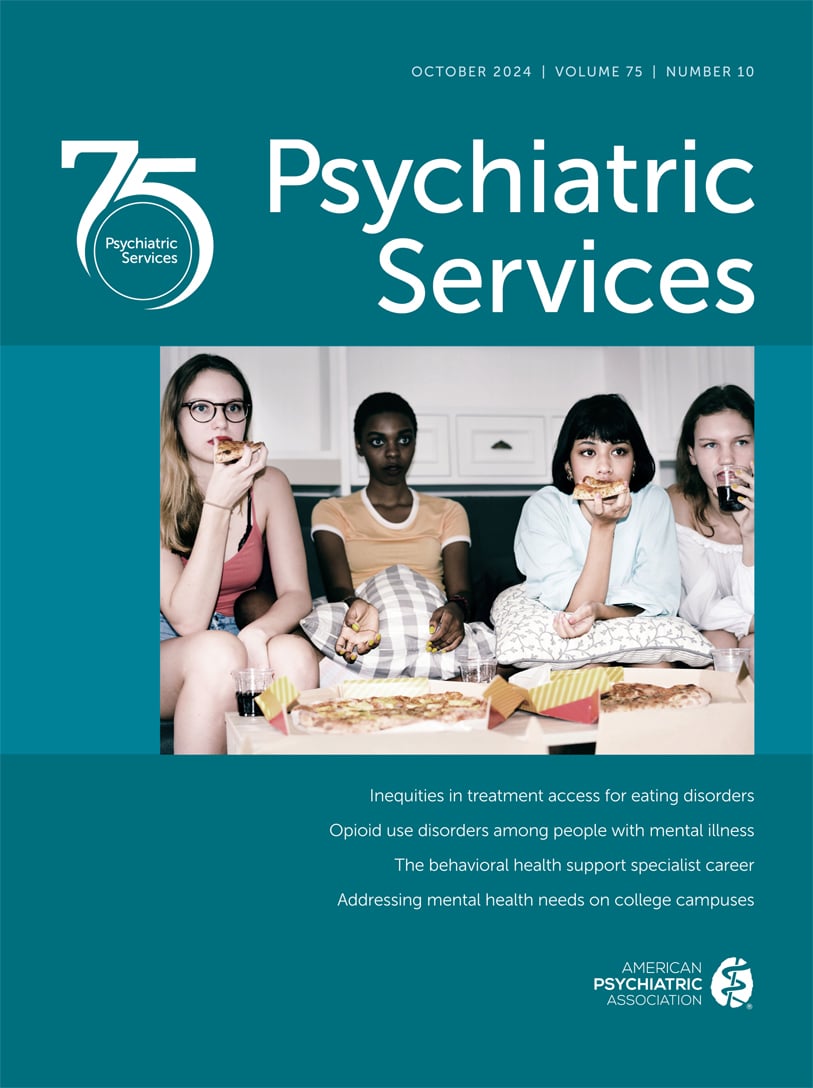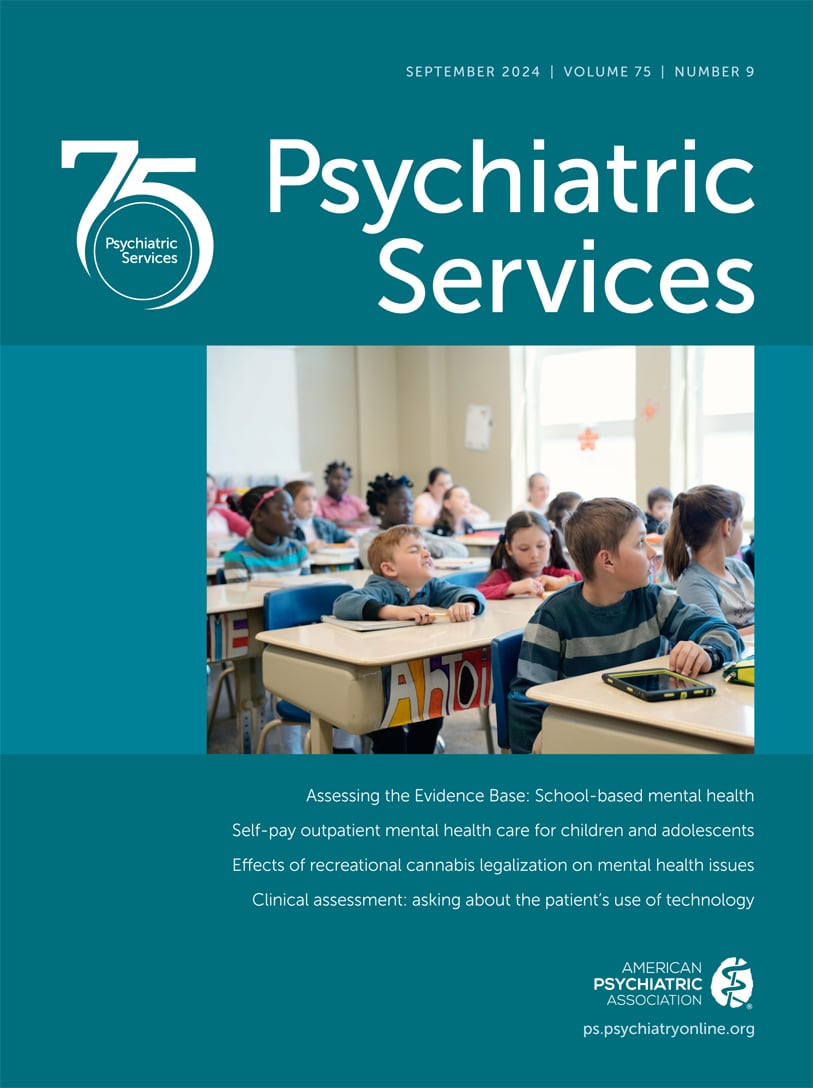Psychiatric Services
- Volume 46
- Number 7
- July 1995
Publication date: 01 July 1995
Pages669–675OBJECTIVE: Results of randomized clinical trials of assertive community treatment for seriously mentally ill patients published between 1990 and 1994 are reviewed to synthesize the state of knowledge about this research and to clarify continuing research ...
https://doi.org/10.1176/ps.46.7.669Publication date: 01 July 1995
Pages676–678OBJECTIVE: The study sought to estimate the number of programs in the U.S. for severely mentally ill adults that used the assertive community treatment model and to describe variations in characteristics of the intervention across programs. METHODS: ...
https://doi.org/10.1176/ps.46.7.676Publication date: 01 July 1995
Pages679–683The Connecticut Department of Mental Health began creating assertive community treatment teams in 1987. The authors describe the approach taken by the department in defining the assertive community treatment model, in creating new assertive community ...
https://doi.org/10.1176/ps.46.7.679Publication date: 01 July 1995
Pages684–688The success of the Program for Assertive Community Treatment (PACT) has led to its replication with different client populations, especially those who are underserved by the traditional treatment system. This paper describes a program in Baltimore that ...
https://doi.org/10.1176/ps.46.7.684Publication date: 01 July 1995
Pages689–695OBJECTIVE: Continuous treatment teams serving persons with co-occurring severe mental disorders and substance abuse disorders at seven sites in New Hampshire were evaluated to determine their fidelity to a model based on the Program for Assertive ...
https://doi.org/10.1176/ps.46.7.689Publication date: 01 July 1995
Pages696–701OBJECTIVE: This study examined outcomes of clients admitted to assertive community treatment programs simultaneously implemented at six sites in northeastern Indiana. METHODS: A total of 212 clients at risk for psychiatric rehospitalization were assessed ...
https://doi.org/10.1176/ps.46.7.696Publication date: 01 July 1995
Pages702–706In 1986, following public hearings, the United States Congress enacted a federal grant program to enable the states and territories to create independent protection and advocacy programs to investigate reports of abuse and neglect of persons with mental ...
https://doi.org/10.1176/ps.46.7.702Publication date: 01 July 1995
Pages707–711People with psychiatric disabilities often require extensive support to maintain employment. The authors describe five areas that supported employment programs should carefully examine when creating a supportive workplace environment: "natural" co-worker ...
https://doi.org/10.1176/ps.46.7.707Publication date: 01 July 1995
Pages712–718OBJECTIVE: The study examined factors influencing clinicians' decisions about disposition of patients seen in a psychiatric emergency service. METHODS: A stratified random unduplicated retrospective sample of 378 patient records was drawn from the records ...
https://doi.org/10.1176/ps.46.7.712Publication date: 01 July 1995
Pages719–721A total of 143 clients and their case managers in a Veterans Affairs (VA) intensive case management program modeled on the Program for Assertive Community Treatment rated their therapeutic alliance after two years in the program. Strong case-manager-rated ...
https://doi.org/10.1176/ps.46.7.719Publication date: 01 July 1995
Pages722–723Patients' satisfaction with a managed mental health care program was examined using a mail survey that included questions about patients' perceptions of various elements of service delivery and of their functioning after treatment. Completed surveys were ...
https://doi.org/10.1176/ps.46.7.722Publication date: 01 July 1995
Pages724–726Difficulties experienced by nurses in treating a total of 249 patients in four short-stay psychiatric units were examined using a rating scale that assessed such factors as overall extent of treatment difficulty, patients' problem behaviors, adequacy of ...
https://doi.org/10.1176/ps.46.7.724Publication date: 01 July 1995
Pages727–728Twenty-four clinicians (five psychiatrists, five registered nurses, and 14 counselors) participated in a psychophenomenological study of the decision-making process in assessing clients for involuntary psychiatric hospital admission. In interviews, the ...
https://doi.org/10.1176/ps.46.7.727Publication date: 01 July 1995
Pages729–730This paper describes the treatment of a physician who developed posttraumatic stress disorder (PTSD) and a polysubstance use disorder after he was shot and held hostage by a patient. Inpatient treatment combined pharmacological and behavioral approaches, ...
https://doi.org/10.1176/ps.46.7.729Article
Past Issues
View Issues Archive
Vol. 75 | No. 12

Vol. 75 | No. 11

Vol. 75 | No. 10
